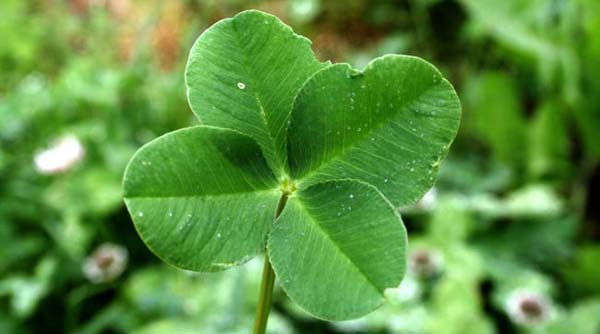Why Do Some Clovers Have Four Leaves?

The leaves of clover plants are said to hold the luck o' the Irish when they sport four leaves. This myth likely arose because four-leaf clovers are rare finds — the result of an equally rare genetic mutation in the clover plant.
There are about 300 species in the clover genus Trifolium, or trefoil, so named because the plants usually have three leaves, or technically, leaflets. The ones you typically find in North America are white clover (Trifolium repens).
Typically all clover plants feature leaves that have three leaflets on them — legend has it that St. Patrick used this so-called shamrock as the symbol of the Holy Trinity. But occasionally the genetics of the clover result in the rare four-leaflet variety, and sometimes even higher-numbered leaves.
"The 4-leaf (technically, 4-leaflet) and higher-leaflet variants are caused by rare genetic mutations," biologist Kenneth Olsen of Washington University in St. Louis told Life's Little Mysteries.
According to the Web site of the Guinness Book of World Records, the most leaves ever found on a clover are 18. This many-leafed specimen was found by Shigeo Obara of Japan on May 25, 2002.
Sign up for the Live Science daily newsletter now
Get the world’s most fascinating discoveries delivered straight to your inbox.

Andrea Thompson is an associate editor at Scientific American, where she covers sustainability, energy and the environment. Prior to that, she was a senior writer covering climate science at Climate Central and a reporter and editor at Live Science, where she primarily covered Earth science and the environment. She holds a graduate degree in science health and environmental reporting from New York University, as well as a bachelor of science and and masters of science in atmospheric chemistry from the Georgia Institute of Technology.










